| FRIDAY, MARCH 17, 2023 | 8:15 – 9:15 AM |
| Leading in Times of Change – It’s STILL All About Relationships!!!!! |
|
Keynote: Paul W. Imhoff, Ed. D.
Director of Government Relations,
Buckeye Association of School Administrators (BASA)
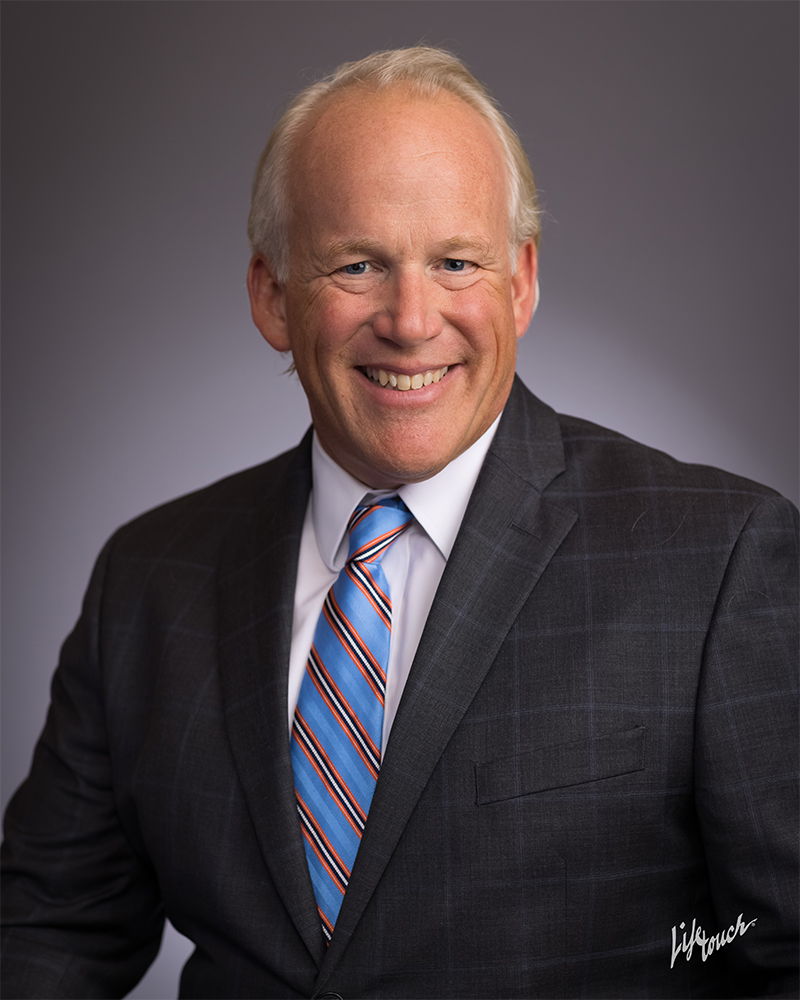 Dr. Imhoff has been a public educator for over 30 years earning his Bachelor’s and Doctor of Education Degrees from Miami University and his Master’s Degree from the University of Dayton. Paul was an Ohio superintendent for 16 years serving the Mariemont Schools in Cincinnati, Ohio and the Upper Arlington Schools in Columbus, Ohio. He was selected as the Ohio Superintendent of the Year in 2018 and was the President of AASA in 2021/2022. Currently Paul serves as the Director of Government Relations for the Buckeye Association of School Administrators, Ohio’s Superintendent Association. In addition, he is active in the AASA Leadership Network leading the Mental Health Cohort and the Eastern States Consortium.
Dr. Imhoff has been a public educator for over 30 years earning his Bachelor’s and Doctor of Education Degrees from Miami University and his Master’s Degree from the University of Dayton. Paul was an Ohio superintendent for 16 years serving the Mariemont Schools in Cincinnati, Ohio and the Upper Arlington Schools in Columbus, Ohio. He was selected as the Ohio Superintendent of the Year in 2018 and was the President of AASA in 2021/2022. Currently Paul serves as the Director of Government Relations for the Buckeye Association of School Administrators, Ohio’s Superintendent Association. In addition, he is active in the AASA Leadership Network leading the Mental Health Cohort and the Eastern States Consortium.
|
| FRIDAY, MARCH 17, 2023 | 9:30 – 10:30 AM |
| Honoring Tradition and Building Excellence: Embracing Challenges to Create Transformative Spaces |
|
Prior to putting pen to paper, Grandview Heights Schools promise to their community was “Honoring tradition and building excellence.” To do this for their new and renovated middle/high school, they embraced the challenge of working with a historical building, a landlocked site and proximate neighbors in creating transformed space to support new teaching and learning practices. Hear from the unique perspective of the construction manager, Superintendent, students, and design architect the lessons for traditional communities and historic buildings that can be applied to your transformative renovation projects.
Learning Objectives:
- What and when to investigate such as historic elements, building structure, systems and construction types.
- Challenges and solutions of ADA accessibility in a historic structure.
- Innovative phasing ideas.
- Creative ways to share infrastructure between a middle school and high school, while maintaining desired separation.
- Communication strategies to the immediate neighbors and community.
- How the district communicated universal design elements such as inclusive restroom facilities.
- The student perspective on how the transformed spaces have changed their learning experience.
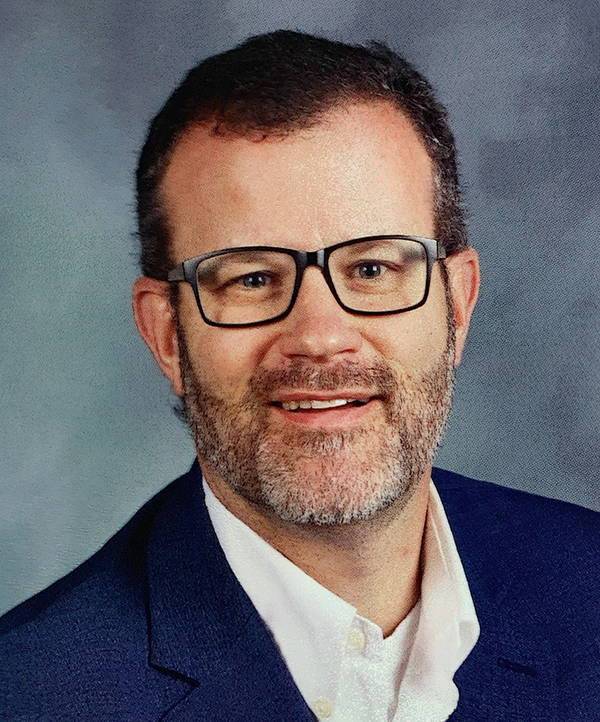 Chris Deis, Chief Technology Officer, Grandview Heights Schools
Chris Deis, Chief Technology Officer, Grandview Heights Schools
As the Chief Technology Officer of Grandview Heights Schools, Chris is responsible for overseeing and executing the integration of technology in the district's learning environments. Guided by the district's strategic plan, his efforts aim to enhance the personalization of education for each student and provide instructional support for teachers. With over two decades of experience in classroom instruction, administration, curriculum coordination, technology integration, and district leadership, Chris possesses a wealth of knowledge in creating innovative learning spaces. He has played a key role in the design, development, and construction of Marysville Early College High School, as well as the redesign and development of Grandview Heights Schools' middle and high schools. Chris holds a Bachelor of Science in Elementary Education and a Master of Education in Administration and Policy Leadership, both from The Ohio State University, and is a Certified Educational Technology Leader (CETL).
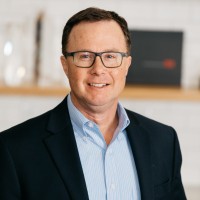 Eric Bull, President, COO, Elford Construction
Eric Bull, President, COO, Elford Construction
Eric has been in the Construction Management industry for nearly 28 years and is currently the President and COO of Elford Construction. He spends much of his time volunteering in his community, where he is currently serves on the Board of the Builders Exchange of Central Ohio and the Delaware County Foundation. Eric graduated with a BA in Civil Engineering from the University of Cincinnati.
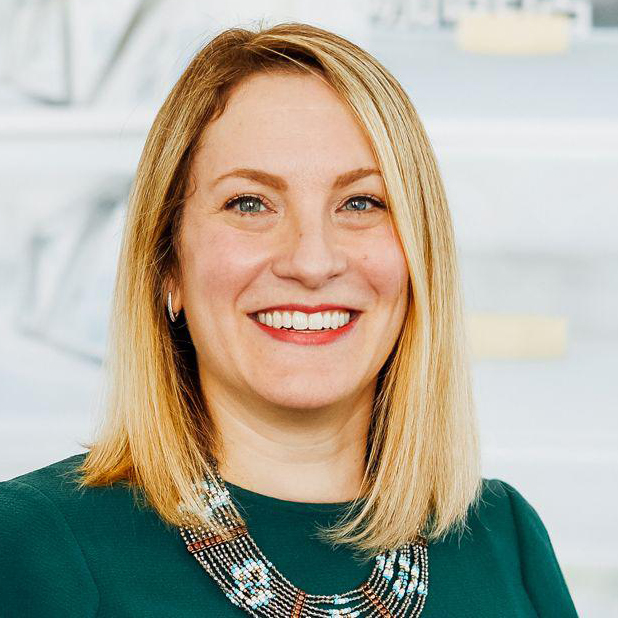 Aimee Eckmann, ALEP, FAIA, LEED AP BD+C, PreK-12 Practice Leader, Principal, Perkins&Will
Aimee Eckmann, ALEP, FAIA, LEED AP BD+C, PreK-12 Practice Leader, Principal, Perkins&Will
Aimee is a Principal and the PreK-12 Practice Leader in the Chicago office of Perkins&Will. As a global innovator in PreK-12 school programming and planning, Aimee advocates for forward-thinking solutions that engage learners, educators, and communities. Aimee graduated with a Bachelor of Environmental Design Degree from Miami University of Ohio, followed by a master’s degree in Architecture from University of Wisconsin – Milwaukee.
|
| Closing the Loop: Shouldn't Post-occupancy Professional Learning be the New Normal for Teachers' Adoption of Newly Designed Learning Spaces? |
|
We will hear the success story of the Kirby School District (Tinley Park, Illinois) who recently rolled out flexible seating in their classrooms. Focused on transforming learning by transforming the learning environment, Superintendent Dan Callaghan instituted the “Kirby Way” to enhance learning for all students in his district. Learn how the post-occupancy training helped teachers focus on why the design of the learning spaces is important. In this interactive learning session, participants will work together collaboratively in team-based conversations and hands-on activities. Get a glimpse into teachers' fears, concerns, and reservations as they apply their creativity and generate excitement for their learners.
 Patricia Cadigan, ALEP, M.Ed., Vice President, Learning Environments, Artcobell
Patricia Cadigan, ALEP, M.Ed., Vice President, Learning Environments, Artcobell
Patricia has 28 years of experience in public education including more than 17 years in school administration. She began her career in education as a science teacher and then served as an assistant principal at the middle school level and principal at both the elementary and high school levels. In the last three years, she served as the Executive Director of Bond Projects, allowing her to bring all her experiences in teaching, learning, and leadership to create a vision of transformation. Implementing modern flexible furnishings and 1:1 technology devices, she helped transform learning throughout the district. Now, serving as the Vice President of Learning Environments at Artcobell, her passion is to help design innovative learning environments and provide professional learning for teachers to create change and impact student learning.
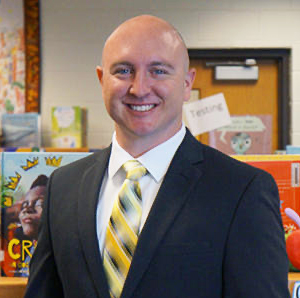 Dr. Dan Callaghan, Superintendent, Kirby School District 140
Dr. Dan Callaghan, Superintendent, Kirby School District 140
Dr. Callaghan has served the Kirby School District 140 community as a teacher and administrator for the past 20 years. He began his teaching career in 2003 and moved into the role of Assistant Principal, Principal, and Director of Curriculum and Instruction before assuming the role of Superintendent. He has provided leadership in developing educational programs and services, building operations, financial planning, communications, and technology integration. He has also served on several district-wide committees to enhance instruction, improve student engagement, and provide professional development and training. Dr. Callaghan holds a Doctorate of Educational Leadership degree from the University of St. Francis, a master's degree in School Administration from Governors State University, and a bachelor's degree in Elementary Education from Trinity Christian College.
TBD, Principal, Box Elder School District
|
| The Collision of AGILE and MESSY: Supporting the Requirements of Authentic Learning |
|
Our learners need to be problem solvers, critical thinkers and modifiers of their world and it is our responsibility to provide the most seamless and transparent set of tools as they learn to analyze, question, elaborate, refine and evaluate their own ideas... to create and to Innovate. Unfortunately, within the walls of our educational environments we have long permitted brave educators to clutter classroom environments to a point of discomfort negatively affecting the health, safety and potential of its learners. As designers we sometimes continue the delivery of “kitchen cabinets” within classrooms without the knowledge that this antiquated harboring device is simply not suited for today’s set of resources. Subsequential responses of simply removing all available cabinetry, shifting the emphasis on wheels, is placing an additional burden on space. In this session, we will discuss the disconnects that permitted us to arrive at this point in time, indicate rules for appropriate systematic solutions, guidelines and recommendations for stuff, as well as the agile movement and housing of these resources that rarely emerge in portfolio imagery. This past year our knowledge has been heightened to reinforce emerging pedagogical demands of AGILE environments supporting “simple and easy” pivots. We further understand that authentic learning can be quite messy, thus the necessity to recognize the requirements and disconnects of space as it relates to clutter. Teacher testimonials will indicate that decluttering can not only be a systematic approach but one that is fully embedded with agency and inclusion. This presentation will explore fresh, new innovative concepts for all attributes of educational space that support the disconnects when simply delivering storage on wheels. We will explore a variety of designed solutions, themes and “apparent trends” for the kitchen sink replacement within various parts of the county focusing on observed disconnects and hurdles.
Learning Objectives:
- Understanding that our antiquated mindsets are preventing us from moving forward even after the weak underbelly of the educational structure has been publicly exposed.
- Understanding that decluttering can be a systematic approach to a built environment to modify historic “conditioned” approaches to the management of stuff that is fully embedded with agency and inclusion.
- Realization that authentic space can be successfully achieved through an event of critical collaboration of instruction and curriculum defining the correct range of tools.
- Establish the mind shift that not only do teachers have too much stuff, but they will also always have too much stuff and it’s our responsibility to create seamless designed solutions to support AGILE learning.
 David Stubbs II, CEO, David Stubbs Design
David Stubbs II, CEO, David Stubbs Design
Founder of David Stubbs Design, David is the creator of award-winning educational furniture solutions that continues to ignite the industry. From his work in public school facilities, his passion focuses on the social/emotional and physical requirements of our stakeholder’s supporting manufacturer’s, designers and school communities worldwide from the disruptive approach to design. David is not only an innovator, researcher, designer, and creator, he is also a writer, consultant, advisor, and speaker. Check out his most recent book, Hinge and Pivot. David can be contacted david@DavidStubbsDesign or visit www.DavidStubbsDesign.com. His work reflects his passion to constantly improve the social/emotional as well as the physical well-being of an educational facilities occupants and stakeholders. All of David's designs have a heightened respect for the most stringent industry safety requirements specifically tip and cleaning, sanitizing and disinfecting standards. Not only do they meet, but it is not uncommon that they exceed these standards. Lastly, his "systems" go to great length to honor, inclusion, equity as well as many other indicators supporting the social requirements of the built environment from the design phase to the agile use of our educational facilities.
|
| FRIDAY, MARCH 17, 2023 | 11:00 AM – 12:00 PM |
| Moving POEs Forward: Addressing the Replication & Generalization Crisis with Rigorous Measurement Practice |
|
Architects can measure a myriad of project characteristics – we know how to talk about energy use, material properties, and budget per square foot. However, clients often want to understand how those physical dimensions result in a user experience. The social science of measuring parts of the human experience is much less developed in post-occupancy evaluation processes. The current lack of standardized measurement practices in the social components of facility performance are undermining our ability as a field to get reliable results from project studies, make valid comparisons between projects, or to improve school design through quantitative research. This session will use an active learning approach to improving POE item design. We will unpack common flaws in item design, practice methods for crafting valid & reliable POE items with few unintended assumptions and demonstrate how improved item design simplifies and streamlines data analysis and visualization.
Learning Objectives:
- Better for everyone. Explain how improved measurement practices lead to more credible studies, better insights when comparing studies, and less measurement bias in their findings.
- Tools anyone can use. Describe strategies for engaging in more robust POE practice as designers and researchers.
- Part of equitable practice. Identify the role of POE methods in amplifying historically marginalized and ignored communities.
- Physical and experiential. Connect the way users report their experience in new facilities with the physical facility measures (ex: energy usage) to create more comprehensive POE findings.
 Michael Ralph, PhD, MCLS, Lead Researcher, Multistudio
Michael Ralph, PhD, MCLS, Lead Researcher, Multistudio
Dr. Michael C Ralph specializes in research method, with a focus on measurement quality. He is an award-winning educator in both K-12 and higher education. He is also internationally published on topics ranging from equitable engagement to facility impact to instructional practice. His passion for education keeps him connected to teachers through his teaching podcast, his client-connected projects with area schools, and his ongoing research into inclusive design.
|
| An Awakening of Applied Learning: Catalyst for Industrial Revolution v2 |
|
COVID-19 accelerated students awareness of non-traditional learning opportunities, to embrace this change, the Kalamazoo Regional Educational Service Agency (KRESA), Kalamazoo, MI partnered with their community industry partners to re-define applied learning for KRESA’s new Career Connect Campus. Michigan industry partners are the catalyst for the industrial revolution v2 Several industry partners in the Kalamazoo surrounding area are working with the KRESA and the architectural team to insure that this connection is an iterative process that balances the “push” of students and the “pull” of industry. Ongoing dialogue and partner development will provide everything from capital to equipment, to mentorships, to internships and to future employment opportunities for students. This is a hands-on session on how innovation stems from a district, design firm, community, and industry partners joining forces with a laser focus on better preparing students for the changing workforce they will soon enter.
Learning Objectives:
- Discover how Michigan industry partners are the catalyst for the industrial revolution v2 and applied learning is meeting these new opportunities.
- Learn how working with industry partners early in the design process can push design to a solution that provides better educational and economic outcomes.
- Be inspired by the robust workshop process for KRESA Career Connect Campus which involved almost 100 industry partners, students, educators, and community members which drove a sustainable world-class design.
- Participate in a discussion with KRESA Superintendent, Tom Zhart about how the Career Connect Campus will become a world-class facility and will become the new benchmark for CTE learning.
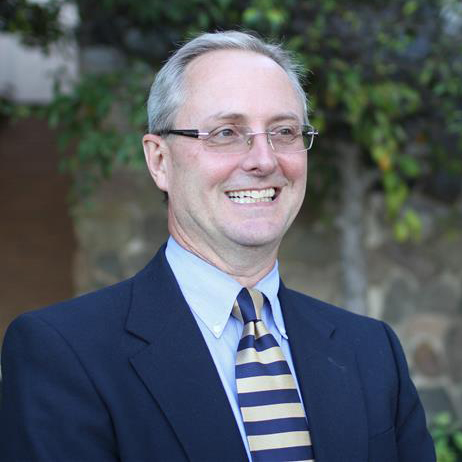 Tom Zahrt, Superintendent, Kalamazoo Regional Educational Service Agency
Tom Zahrt, Superintendent, Kalamazoo Regional Educational Service Agency
Tom is currently Interim Superintendent of Kalamazoo RESA. Most recently he has been Assistant Superintendent of HR and Operations there. He is an HR executive of over 20 years. Over the last decade, Tom has screened, hired, coached, and mentored school administrators, principals, and assistant principals. Tom supports principals and school administrators with tough employee relations issues, contract issues, operational issues, and school safety issues.
 Leanne Meyer-Smith, AIA, K-12 Education Leader, Principal, DLR Group
Leanne Meyer-Smith, AIA, K-12 Education Leader, Principal, DLR Group
Leanne’s passion for design excellence has primarily focused on K-12 educational facilities. She values the contribution of clients and their stakeholders, and understands the relationships between student and educator needs, and the realities of technical systems. In addition to a detailed knowledge of how a building is put together, she works with her clients to connect people to places of pride, meaning, and the best possible learning opportunities. Leanne often serves clients as project leader and project manager. She leads client engagement activities and presentations, master planning efforts, and design teams in both new construction and renovation projects.
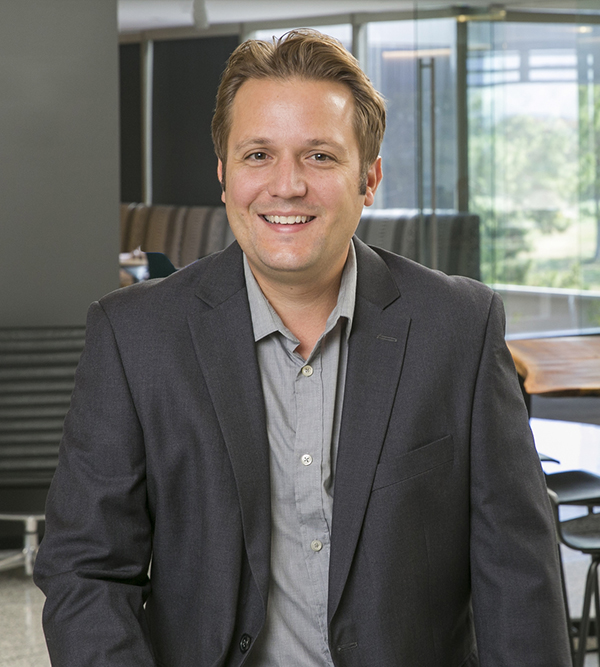 Matt Brehmer, K-12 Design Leader, DLR Group
Matt Brehmer, K-12 Design Leader, DLR Group
Matt is an expert in Career Technical Education environments. He balances real-world work environment functionality with education environments to deliver high-level, hands-on learning that prepares students for the workforce. Matt’s expertise in architectural design and programming allows him to integrate his knowledge of graphic design with his passion for sustainable architecture to communicate concepts to a variety of clients in both the private and public market sectors. He maintains a client’s vision from first concept to final punch list, ensuring that the project story intimately and uniquely communicates the clients’ vision, mission, and values through design.
|
| Current Trends in Educational Building Systems Design |
|
As another school year begins, are your building systems ready? With ever changing codes, construction costs, environmental factors post pandemic, and emerging educational trends, there is always something new to learn. In this session experienced system engineers will discuss current, relevant trends and topics and share lessons learned from a wide range of projects in the Midwest region. Topics will include designing for Indoor Air Quality and healthy buildings, how energy code updates impact your facility, and when commissioning is required and how it benefits your building.
Learning Objectives:
- Describe emerging trends in building systems design for K-12 buildings.
- Discuss possible opportunities and solutions to common issues related to Indoor Air Quality.
- Develop a plan of action in response to energy code impacts.
- Advocate for the benefits of commissioning.
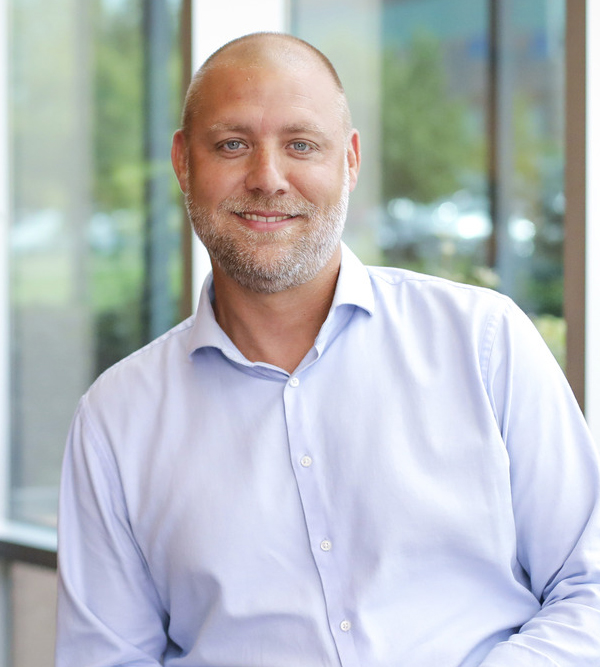 Doug Everhart, PE, LEED AP, K-12 Education Practice Director, Henderson Engineers
Doug Everhart, PE, LEED AP, K-12 Education Practice Director, Henderson Engineers
Passionate about designing spaces for students, including future engineers, Doug is the K-12 education practice director at Henderson Engineers, a national building systems design firm headquartered in Kansas City. With over 20 years of experience, he is well-known for his proactivity, responsiveness, and calm leadership style. Doug has worked closely with architects, contractors, and school and facility administrators to design innovative learning environments nationwide.
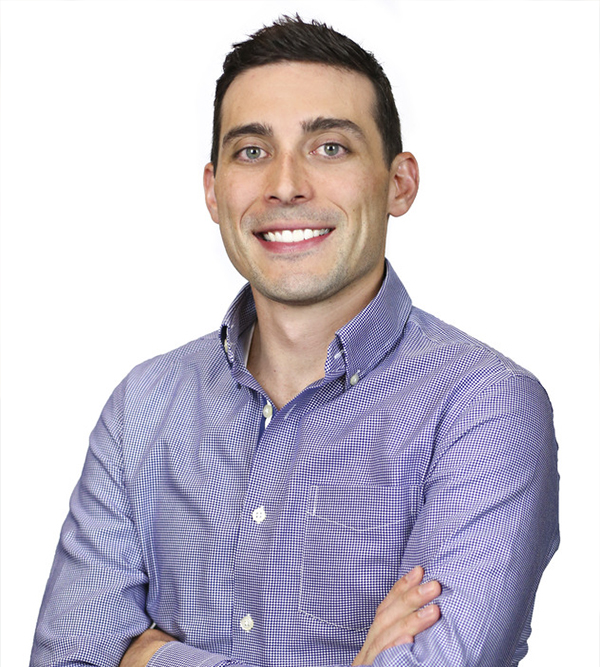 Chris Greer, PE, LEED AP, Community Sector Design & Construction Director, Henderson Engineers
Chris Greer, PE, LEED AP, Community Sector Design & Construction Director, Henderson Engineers
Having worked on a variety of K-12 education buildings throughout his career, Chris knows what it takes to create comfortable learning environments for students and teachers. His background in mechanical engineering and his project management experience makes him a trusted resource. Currently serving as Henderson Engineer’s Community Sector Design & Construction Director, Chris is a partner for the life of the building regularly advocating for processes to improve building performance such as commissioning.
|
| FRIDAY, MARCH 17, 2023 | 2:00 – 3:00 PM |
| Centering Students and Community as Primary Stakeholders to Create a Regenerative Vision for the Design of the New Bruce Vento Elementary School |
|
Saint Paul Public Schools and Cuningham embarked on a community-based approach to create a regenerative vision statement for the design of the new Bruce Vento Elementary School. Through the process, a range of sustainable criteria were accessed to determine priorities, and stakeholders were identified to develop a decision-making framework grounded in well-rounded feedback from multiple sources. This inclusive process engaged a robust stakeholder group including teachers and staff, students, district leaders, community partners, and neighbors to establish holistic goals for their new school, ultimately leading to the Regenerative Vision Statement. In response to feedback early in the process, the design team centered the regenerative visioning process on the AIA Framework for Design Excellence, which expands criteria beyond energy, water, and resources to integrate student and teacher well-being, equitable learning opportunities, and connection to nature and ecosystems. Learn how this process and framework were developed and implemented to create a regenerative vision statement to guide decision-making for the new Bruce Vento Elementary School Project. Project Manager, Pam Bookhout from Saint Paul Public Schools will join the Cuningham design team to share how using this framework shaped the design process and engagement strategies and leveraged the voice of the community throughout the process. Thoughtful activities and outreach created in partnership with the District made information accessible to even the youngest students and created a platform which continues to guide decisions regarding resources, health and well-being, and community and curriculum, while also setting the framework for the design story.
Learning Objectives:
- Understand how a regenerative framework can be used in the planning and design of educational facilities to foster student and staff well-being and success.
- Learn how to craft a holistic community engagement process that explores the educational, emotional, physical and social needs of students, faculty, staff, and the community beyond.
- See how prioritizing regenerative design principles early in the design process impacts the value of community input, provides rich opportunities to weave curriculum with design, engages students in immersive outdoor learning environments, and supports a sense of safety and belonging.
- Discover how outcomes from this exploratory regenerative design process can be translated into design guidelines and how the built and natural environment can be designed in unison to address all stakeholders’ needs and reflect the heart and spirit of the community.
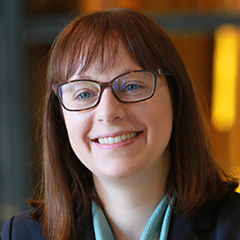 Heidi Neumueller, AIA, NCARB, LEED AP, Associate Principal / Project Manager, Cuningham
Heidi Neumueller, AIA, NCARB, LEED AP, Associate Principal / Project Manager, Cuningham
Heidi brings a combination of commitment, drive, and sensitivity to each project. She is adept at leading immersive workshops, engaging with clients and user groups, to transform their vision and needs into active environments for learning. Heidi is leading conversations across the country based on her research of the key design components that contribute to safety and security of inclusive restroom design. Heidi is the 2018 recipient of the AIA Minnesota Young Architect Award.
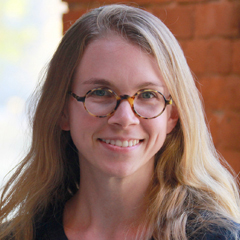 Jen Garman, AIA, LFA, Associate / Architect, Cuningham
Jen Garman, AIA, LFA, Associate / Architect, Cuningham
Jen leads the Regenerative Design Initiatives of Cuningham’s Grow Studio with her passion to create ecologically-minded spaces. The value of her holistic approach is built into the design details of the built environment and woven into her collaborations with clients to realize innovative visions for 21st century learning. Her work for schools across the nation is marked by her dedication to advocating for progressive learning spaces that positively impact people and the world around them.
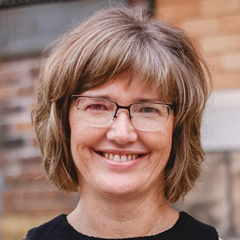 Pam Bookhout, Project Manager, Saint Paul Public Schools
Pam Bookhout, Project Manager, Saint Paul Public Schools
Pam is a Facilities Project Manager with Saint Paul Public Schools, managing construction projects large and small to improve learning environments. Projects begin with planning, selecting the right team of consultants and contractors, engaging stakeholders, and bringing the job to completion. Prior to her work in education, Pam worked in affordable housing development for fourteen years, building relationships with stakeholders, securing financing, and bringing each project to construction completion.
|
| Embracing Change: Aligned Learning through Program Assessments |
|
Change will come and, in those instances, we have the opportunity to be curious and welcome it. Modeling behavior that does not fear change benefits both us and those around us, like our students. In a world that stops for no one, we need good information, good professional partners, and a healthy growth mindset to embrace change. If we’re looking to develop students with holistic skill sets, to assess their mastery of content through alternative methods, and to prepare them for a world where change is constant, then agile environments is what they need. But how can districts decide what changes are needed to enhance agility in their buildings? To best prepare ourselves for change in our schools, we need tools; actionable steps. A Program Assessment is one helpful step that becomes a valuable tool for Districts. Program Assessments help District leaders develop in-depth understandings of whether spaces support its current and future curricular goals, and how the facilities can be updated to match their curriculum needs.
Learning Objectives:
- Learn of current research that informs innovative practices for student-centered learning.
- Understand traits associated with physical environments and their alignment with learning goals.
- Learn techniques to inform stakeholders of evidence-based methodologies on this topic that stretches their thinking.
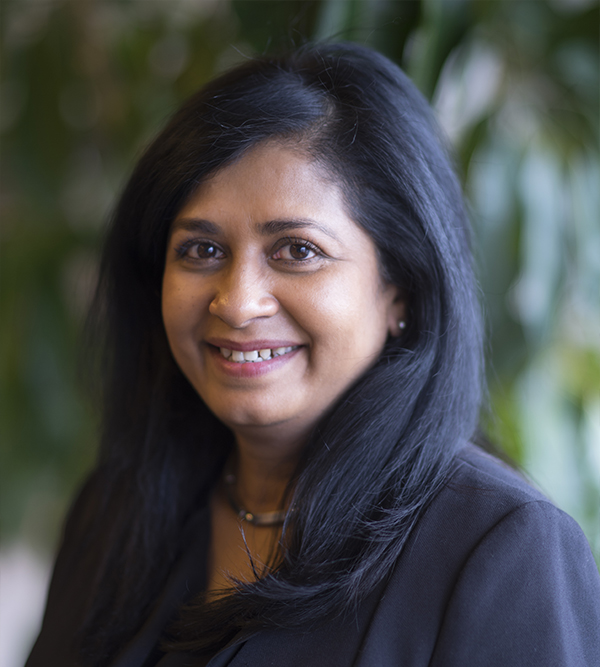 Nandita Mishra, Intl. Assoc. AIA, ALEP, LEED AP, Senior Education Market Strategist, TMP Architecture, Inc.
Nandita Mishra, Intl. Assoc. AIA, ALEP, LEED AP, Senior Education Market Strategist, TMP Architecture, Inc.
Nandita is a Vice President and Senior Educational Planner at TMP Architecture, focusing on educational planning, design, and project management of K-12 educational facilities. She is a thought leader int eh field of K-12 facility planning and a certified educational planner with A4LE, where she is a past Chapter President. Nandita is also involved with the AIA Committee on Architecture for Education. Her work is supported by her teaching background.
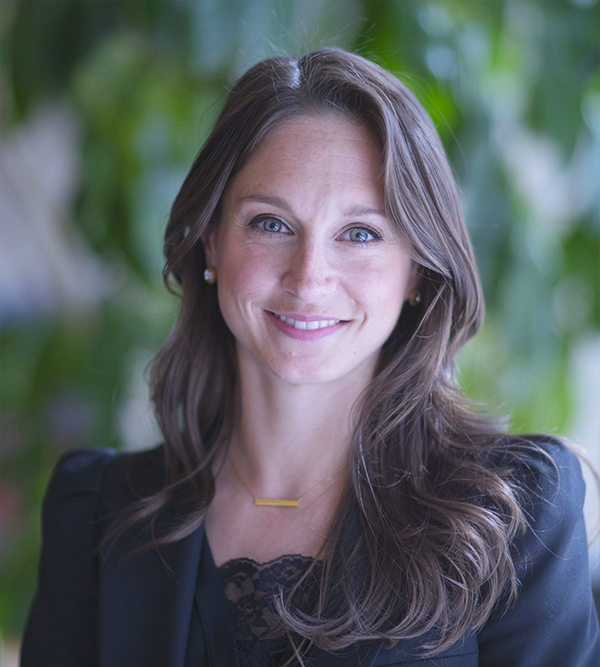 Laura Casai, IIDA, LEED AP, Senior Education Market Strategist, TMP Architecture, Inc.
Laura Casai, IIDA, LEED AP, Senior Education Market Strategist, TMP Architecture, Inc.
Laura is a Vice President and Senior Educational Planner at TMP Architecture. She has led the firm’s interior design efforts on many significant projects for K-12 and college/university clients. Laura is a LEED Accredited Professional and an NCIDQ-certified interior designer. Her work includes hundreds of projects that are functional, vibrant, and flexible, supporting innovative learning environments for all age groups.
|
| SATURDAY, MARCH 18, 2023 | 9:00 – 10:00 AM |
| The Good, the Bad and the Ugly of JOC: Can it work for me and how? |
|
Most A4LE attendees now have some knowledge or perceptions of Job Order Contracting (JOC) and its benefits. Some of those experiences or perceptions are Good, some Bad and some – downright UGLY! This presentation will educate the attendee on the basics of how Job Order Contracting (JOC) is SUPPOSED to work and to discuss what can and has gone wrong and why. But most importantly, to give attendees solid ideas on how they can fix some of the Bad and Ugly in JOC programs they’ve seen or experienced.
Learning Objectives:
- Understanding of Basic/Textbook Job Order Contracting.
- How to avoid some of the problems Owners have experienced with JOC.
- Understanding of options to enhance JOC for the benefit of the Owner and End-User.
- Understanding of JOC benefits from an experienced Owner's perspective.
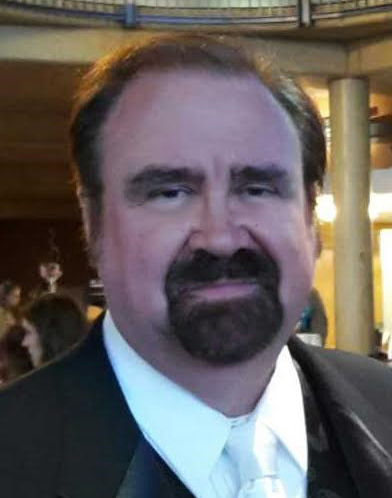 Mike Coberley, Executive Director Brown & Root Industrial Services, LLC
Mike Coberley, Executive Director Brown & Root Industrial Services, LLC
Mike has been in the engineering / construction industry for over 35 years. He has been working with Job Order Contracting for over 17 years with published articles and has presented on JOC at numerous tradeshows and conferences. Also, Mike is a member of the International Association of Business Communicators and is certified as a Facilities Management Professional with IFMA.
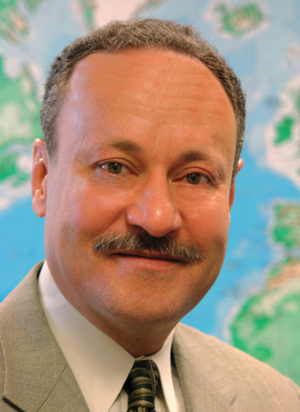 Rick Farrag, PE, PMP, Vice President Metropolitan Community College
Rick Farrag, PE, PMP, Vice President Metropolitan Community College
Rick has more than 35 years of experience in the construction industry, specifically in Job Order Contracting, and is the Vice President for On-Call Construction at Brown & Root. He holds an MS degree in Engineering Management and BS degree in Architectural Engineering. Rick has authored and co-authored several published articles in the subject of JOC. He has also presented on JOC at several trade organizations and participated in providing professional training. He is a Past Industry Chair at the Center for JOC Excellence (CJE).
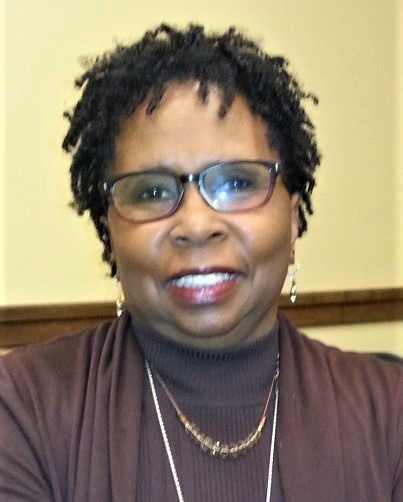 Delois Moore, MPA, CJP, Metropolitan Community College
Delois Moore, MPA, CJP, Metropolitan Community College
Delois currently serves as a Purchasing Coordinator for Metropolitan Community College in Kansas City, Missouri. Prior to that, she was the Senior Procurement Manager for the City of Kansas City where she was responsible for processing city-wide construction, facility repairs, demolition, and environmental projects. For over 11 years she has managed the Job Order Contract for the City. In addition, she has a Master’s in Public Administration (MPA) and is certified as a Job Order Contracting Professional (CJP). She was instrumental in the implementation of job order contracting for the City of Kansas City, Missouri. She is a veteran of the United States Army. Delois has been a member of Mid-America Chapter of Public Procurement (MACPP) for over 15 years. She currently serves MACPP as the Membership Director and previously served as Program Director and Historian. She sits on the Owner’s Advisory Council and Board of Directors with the Center for JOC Excellence where she contributes professional expertise, diverse knowledge of constituent perspectives, and connects to peers to assist, advocate and support the non-profit organization’s mission to educate and further advance Job Order Contracting. Delois maintains active participation in multiple organizations that include:
- Missouri Association of Public Procurement (MAPP)
- National Association for Black Professional Administrations (NFBPA)
- Red Cross Volunteer (Yellow Ribbon-veterans)
- Community Emergency Response Team (CERT)
|
| Boys Town Education Center: The Evolution of Learning Environments that Serve All Students |
|
Since opening in 1948, historic Boys Town High School has provided safe and inspiring learning experiences for its students – a dream that began when Father Flanagan founded the storied Boys Town over 100 years ago. All students deserve next generation learning environments. So, how do you achieve this for 100% at-risk youth? As Boys Town enters its next chapter with the design and construction of the new Education Center, the ultimate goal is to create a stimulating learning environment that will be family-oriented, innovative, and inviting, while fostering fun and inspiring students to love to learn again. Throughout this session, we will explore how staff and designers collaborated with students and educators to accomplish this important goal whilst transitioning to a new superintendent.
Learning Objectives:
- Learn how trauma-informed design can positively impact a learning environment.
- Learn how multipurpose, flexible, and adaptable spaces support soft-skill education.
- Learn how an educational facility can bridge learning and social-emotional wellbeing.
- Learn how to design spaces for kids who endure boundary issues.
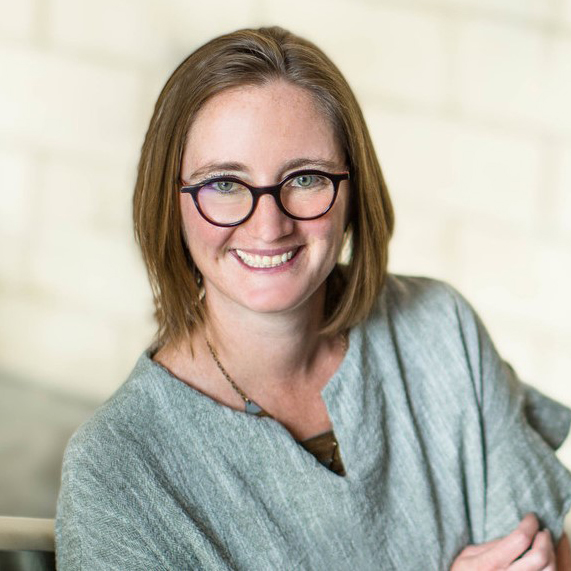 Vanessa Schutte, AIA, ALEP, K-12 Education Leader, DLR Group
Vanessa Schutte, AIA, ALEP, K-12 Education Leader, DLR Group
Vanessa specializes in the assessment of educational adequacy within school districts. This means that she listens to educators to determine what is and what is not working. She understands current and potential programming offerings as well as demographic trends within the district. Once this is understood, she will propose alternatives to help the district define their future facility needs to meet their vision. “I view integrated design as the synergy between all stakeholders: owner, architect, and engineers during all phases of design. I am the daughter of two teachers. When I am working on a school, I feel like I am working for a greater good. I am helping to create active and engaging learning environments for students.” As a designer, Vanessa excels in working with clients to draw out their dreams and desires during the charrette process and interpreting those contents into a clear design theme.
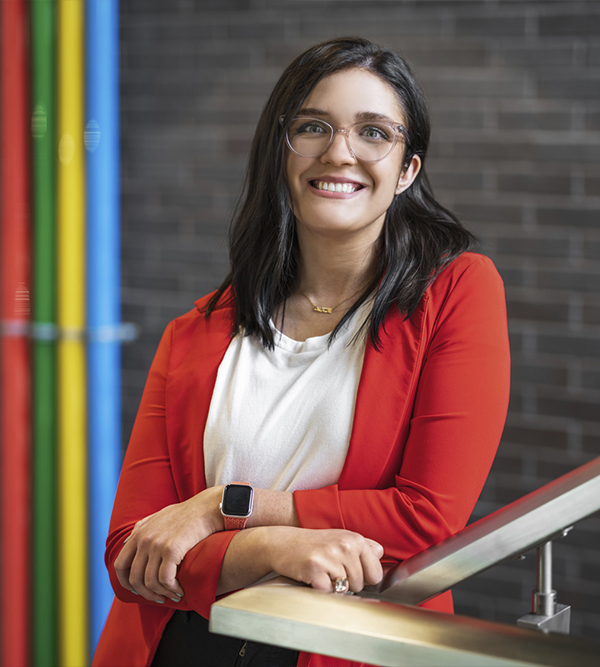 Allie Smith, NCIDQ, IIDA, Associate | Interior Designer, DLR Group
Allie Smith, NCIDQ, IIDA, Associate | Interior Designer, DLR Group
Allie is an interior designer at DLR Group who specializes in K-12 educational design and has contributed to dozens of education projects, from large-scale new high schools to renovations and additions. She thrives on the opportunity to design learning environments that make a positive impact on both students and teachers alike. She understands that there are many ways to look at the design of a space, which makes it crucial to approach each space from all angles to develop the most effective design and furniture selection. Allie also utilizes her experiences in the K-12 education studio to create schools that adapt to the way people learn and instruct, while simultaneously respecting the client’s budget and program needs.
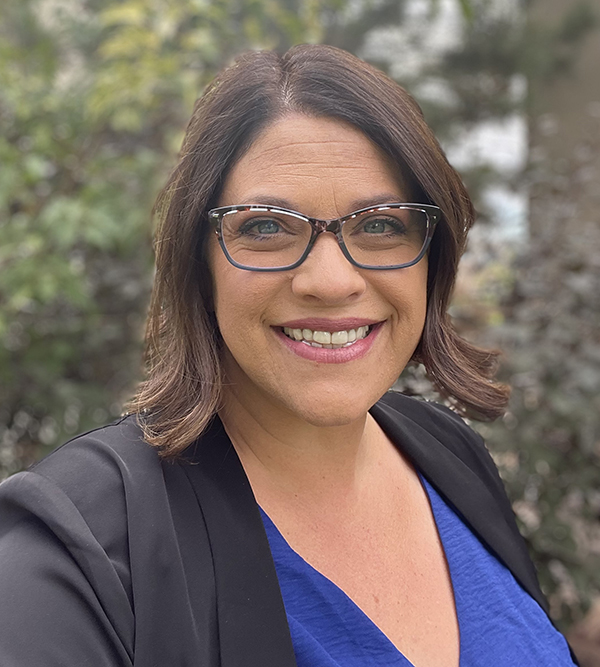 Lindsay Meier, Superintendent, Boys Town
Lindsay Meier, Superintendent, Boys Town
Lindsay is in her first year as Superintendent at Boys Town in Omaha, Nebraska. Prior to her move to Nebraska, Lindsay served in Denver Public Schools for 14 years as a school leader (principal and assistant principal), and most recently Instructional Superintendent. Lindsay completed her undergrad in Spanish Education at Bowling Green State University, and her School Leadership licensure at the University of Denver. She recently graduated from the University of Colorado with a Masters in Strategic and Organizational Leadership, and is working on her doctorate at The University of Nebraska at Omaha. Lindsay enjoys spending time with her husband, Mitch. She is mom to Brayden (9), Delaney (8) and rescue dog Piper. She is an avid Ohio State Buckeye fan, and loves to cook.
|
| SATURDAY, MARCH 18, 2023 | 10:15 – 11:45 AM |
| Safety and Security Summit |
|
As school districts continue to focus on learning recovery post-COVID, there is also a paralleled emphasis on safety and security concerns beyond just the physical environment. School district personnel will lead these discussions as we center the conversation around campus cultures, behavioral concerns, technology advancements, and how school district staff responds, day in and day out, to these challenges. This is part of a series of regional summits to gather insight and understanding, through our educators, on how our schools are supporting their staff and students in these endeavors.
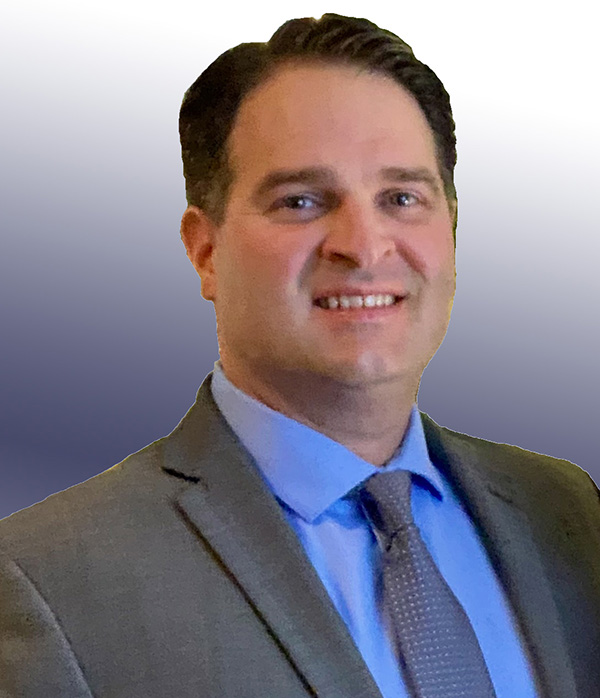 Monte Detterman, Director of Business Services, South-Western City School District
Monte Detterman, Director of Business Services, South-Western City School District
Monte has been in the educational field for more than twenty-five years. Throughout his career, he has had numerous experiences ranging from classroom instruction, technology administration, operational and facilities management, purchasing oversight, construction supervision, safety coordination, and contract negotiations. In his current role, Monte has been directly involved in coordinating the district’s safety team. As part of the district’s safety team, he is actively involved in the development of safety plans, annual exercises, and coordination with first responders. Additionally, Monte works in conjunction with architects, engineers and contractors in the installation and implementation of safety measures in both new and existing buildings.
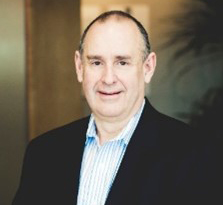 Phil Santore, Vice President and Managing Principal, Introba, Security Division
Phil Santore, Vice President and Managing Principal, Introba, Security Division
Phil is CPTED certified and has over 43 years of experience in the security industry, a wide-ranging tenure that has included engagements in physical and electronic security systems design, and high-level consulting and threat & vulnerability assessments. During his time as Managing Principal of Introba’s Security Division, Phil has worked on a number of landmark security consulting projects, including the World Trade Center, the New York Stock Exchange, Sandy Hook School, Lindbergh High School, and Time Warner. His reputation as an out-of-the-box thinker has led to a number of truly unique security solutions – many of which have been covered by security industry publications and through speaking engagements.
Cheryl Helsel, School Safety Planner
Cheryl has been working with school safety plans for the last 7 years, first through Ohio Homeland Security and now as part of the Ohio School Safety Center which was established by Governor DeWine in 2019.
As a planner, she has assisted in developing and writing the sample safety plans and has created material for the Ohio School Safety Center website, quarterly newsletters and annual SUMMIT. Cheryl conducts Security and Vulnerability Assessments for schools and other buildings. She has written and evaluated Grant applications. She is one of four planners that evaluate the more than 5,000 school safety plans on a 3-year cycle.
Cheryl has a Master’s degree in Counseling, (Amridge University) a BA in Art education (OSU) and 4 years of experience as a School administrator/teacher at Central Ohio Christian School and Daycare. Prior to working with school plans, she worked for more than 20 years in the facilities departments of the Ohio State Highway Patrol and Public Safety, Nationwide Insurance and a local architecture firm, designing space and drawing construction plans. Early in her career, she worked at Rosemont School and Receiving Center. Cheryl has been married for 41 years to a retired police officer/dispatcher and they have 3 grown sons and 6 grandchildren.
|